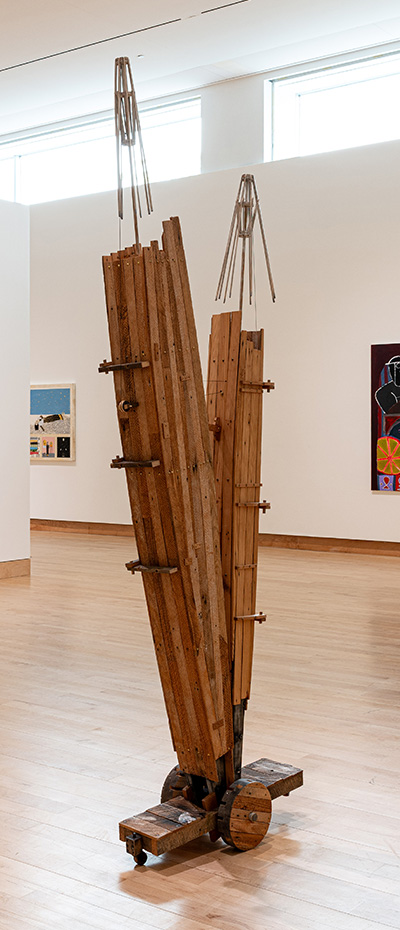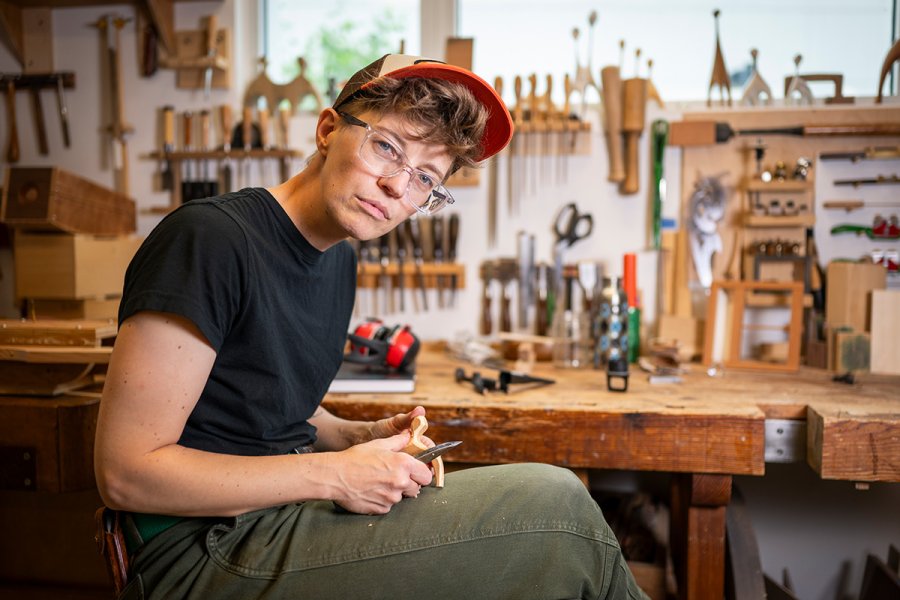Imagine an 11-foot-tall wooden object on three legs with a little pincer way up on top — what artist Katie Hudnall calls a sort of “demented coat rack.” When the viewer pulls a lever, the pincer opens, allowing a maple seed to gracefully whirl to the ground, helicopter-like.

Hudnall’s sculptures have the trappings of utilitarian objects but often function in unexpected ways. Madison Museum of Contemporary Art
This singular experience awaits visitors to The Longest Distance between Two Points, Hudnall’s current show at Philadelphia’s Museum for Art in Wood. The director of UW–Madison’s renowned woodworking and furniture program encourages us to interact with her work — and hopefully to undergo a transformation.
“The sculpture is trying to get people to recognize the value in stopping for two or three seconds and just enjoying the movement of this seed, this brilliant evolutionary tool,” Hudnall says. “It’s easy for us to do that when we’re kids, but it’s harder as an adult. Everybody just feels too busy to pay attention to how beautiful the world still is.”
Hudnall recently got a shoutout in a New York Times article about the increasing prominence of women in the woodworking field. In 2020, she took over as head of the UW’s program — what she calls “a dream job.” She likes to start her students with a project called “Not a Spoon,” in which they can construct a piece of wooden tableware that goes beyond all known boundaries.
In her own work, Hudnall creates boxes, tool-like pieces, and furniture-like sculptures that tend to move. They have drawers, doors, and handles — the trappings of utilitarian objects — but often function in unexpected ways.
“They do something that we don’t usually ask our furniture to do,” she says.
Hudnall still draws inspiration from her childhood passions: illustrations by Shel Silverstein and Edward Gorey and the absurd contraptions from the TV show Pee-wee’s Playhouse. She often begins a piece by sketching intriguing mechanisms she’d like to make. She’ll spend hundreds of hours on the bigger sculptures, assembling multiple pieces with thousands of screws.
As for materials, you won’t find Hudnall buying wood from a store. Instead, she recovers it from dumpsters, construction sites, and curbs.
“I love knowing that if I walk past a trash can, and it’s got a bunch of wood sticking out of it, I could rescue that material from the garbage stream and turn it into something beautiful,” she says. “It makes me feel like a magician.”
Published in the Fall 2025 issue




Comments
No comments posted yet.